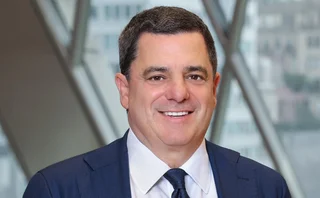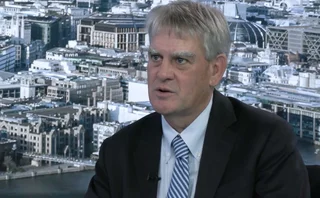
Asia energy dealer of the year: BP
BP restructures long-dated hedge for commercial player

Energy Risk Asia Awards 2016
Low oil and gas prices have shaken up the dynamics of the Asian energy market over the past two years, leaving participants with new and unexpected challenges.
The 60% plunge in the price of Brent crude since mid-2014 has slashed margins for producers and created an urgent, often existential, need for increased capital efficiency and financing. For consumers – previously the main drivers of hedging activity – the focus is on revisiting hedging programmes, some of which are now extremely costly.
However, with many banks having left the market, there are now fewer counterparties willing to transact the sophisticated, long-term structures necessary to address these issues, market participants say. London-headquartered oil and gas major BP is one of very few firms that are increasing its focus on third-party risk management at this time. Over the past two to three years, it has ramped up its structured business globally, says Max Nuttall, BP's London-based global head of structured products. In Asia, this has enabled it to service commercial players that are struggling with existing hedges, he says.
An example of this is a sizeable hedge restructuring BP carried out last year for a large South Asian gas aggregator. The original swap, which went out to 2020, had been transacted with BP in 2014 when the price of Brent crude was relatively high. Brent crude futures trading on Atlanta-based Ice opened 2014 at $107 a barrel (/bbl), rose to a high of $115/bbl in June, before dropping sharply to close out the year at $57/bbl. By 2015, the drop in crude prices meant the firm was paying a hefty settlement each month on its mark-to-market positions. BP's restructure rebased the strike price to a lower level at the front end of the contract in return for the optionality to extend the structure by two years with a higher strike price at the back end.
Both the option revenue paid to the client by BP and the lower strike price addressed the client's near-term cashflow squeeze, while the extended structure meant it could add volume. "The firm had originally wanted to hedge greater volumes, but it was constrained due to internal limits on how far forward it could hedge," says Amit Sharma, senior derivatives marketer. "This structure [addressed] those limitations."
The deal demonstrates BP's new focus on client risk management, says Nuttall. "We're becoming increasingly good at understanding where [customers] have flexibility and helping them [use] that to meet their targets," he says. "This deal required us to understand the client's future exposures and not just act on the short-term pain they wanted to alleviate."
We're becoming increasingly good at understanding where [customers] have flexibility and helping them [use] that to meet their targets
Max Nuttall, BP
The BP team attributes a lot of its success to its strong physical presence throughout Asia, which gives it both a detailed understanding of market nuances and also the ability to lay off risk through physical relationships. Additionally, its global presence offers many natural risk offsets – for example, transactions with Asian commercials might be offset against those with US producers. Its physical market expertise is valued highly by clients.
"BP is very proactive in the markets we operate in, particularly middle distillates," says a risk manager at a South-east Asian oil and gas firm. "The team has excellent market knowledge and offers very competitive pricing. It is certainly helping fill some of the vacuum left by banks."
BP has strengthened connections between its physical sales teams and its derivatives traders in recent years, enabling it to develop holistic solutions that address clients' physical and risk management needs, says Iain Lawson, Singapore-based head of structured products, eastern hemisphere.
An example of this is a diesel supply contract signed at the end of the third quarter of 2015 with an Australian miner. The contract allows the client to switch between a floating price, derived from a Platts index, and a fixed outright number agreed on by the two parties. The client can request a fixed number on any portion of the one-year contract right up until payment is due. This gives the cashflow security of hedging without the administrative burden and reputational risk that are sometimes associated with trading derivatives. It can also be a more precise risk-management tool than derivatives, Lawson says. "Derivatives usually have fixed volumes and tenors, whereas physical product delivery is often subject to slight variation in volume each month," he says.
Because these contracts require physical and structuring capabilities, very few firms are able to offer them, Lawson says. "They are something of a sweet spot for us."
BP is also increasing its offering for producers in Asia, many of which are now struggling to turn a profit and attract much-needed financing. For small to mid-sized producers trying to buy assets, for example, access to affordable financing has become a chokepoint, says Lawson. In a world where banks are pulling back from reserve-based lending, BP is increasingly partnering with producers and providing access to finance, he says. "We will step in to offtake the crude and also provide a hedge, or even a fixed price for it, which makes the project more bankable for a lender than a small producer standing alone."
Only users who have a paid subscription or are part of a corporate subscription are able to print or copy content.
To access these options, along with all other subscription benefits, please contact info@risk.net or view our subscription options here: http://subscriptions.risk.net/subscribe
You are currently unable to print this content. Please contact info@risk.net to find out more.
You are currently unable to copy this content. Please contact info@risk.net to find out more.
Copyright Infopro Digital Limited. All rights reserved.
As outlined in our terms and conditions, https://www.infopro-digital.com/terms-and-conditions/subscriptions/ (point 2.4), printing is limited to a single copy.
If you would like to purchase additional rights please email info@risk.net
Copyright Infopro Digital Limited. All rights reserved.
You may share this content using our article tools. As outlined in our terms and conditions, https://www.infopro-digital.com/terms-and-conditions/subscriptions/ (clause 2.4), an Authorised User may only make one copy of the materials for their own personal use. You must also comply with the restrictions in clause 2.5.
If you would like to purchase additional rights please email info@risk.net
More on Awards
Collateral management and optimisation product of the year: CloudMargin
Delivering the modern blueprint for enterprise collateral resilience
Flow market-maker of the year: Citadel Securities
Risk Awards 2026: No financing; no long-dated swaps? “No distractions,” says Esposito
Pricing and analytics: fixed income – Quantifi
Quantifi delivers high-performance, transparent and adaptable pricing and risk analytics for fixed income and credit markets
Derivatives house of the year: Citi
Risk Awards 2026: Rev up, RWAs down, as US bank gets back on track (with added XiNG and XiP)
Technology vendor of the year: SS&C Algorithmics
Risk Awards 2026: From cloud, to chips, to maths tricks – vendor getting more out of existing tech
SS&C Algorithmics: winner’s interview with Curt Burmeister
SS&C Algorithmics wins three categories in this year’s Markets Technology Awards in addition to Technology vendor of the year at the Risk Awards
Best vendor for system support and implementation: Murex
Murex wins Best vendor for system support and implementation at the Markets Technology Awards 2026
Pricing and analytics: cross-asset and structured – Murex
Murex wins Pricing and analytics: cross-asset and structured at the Markets Technology Awards 2026 thanks to its MX.3 platform








